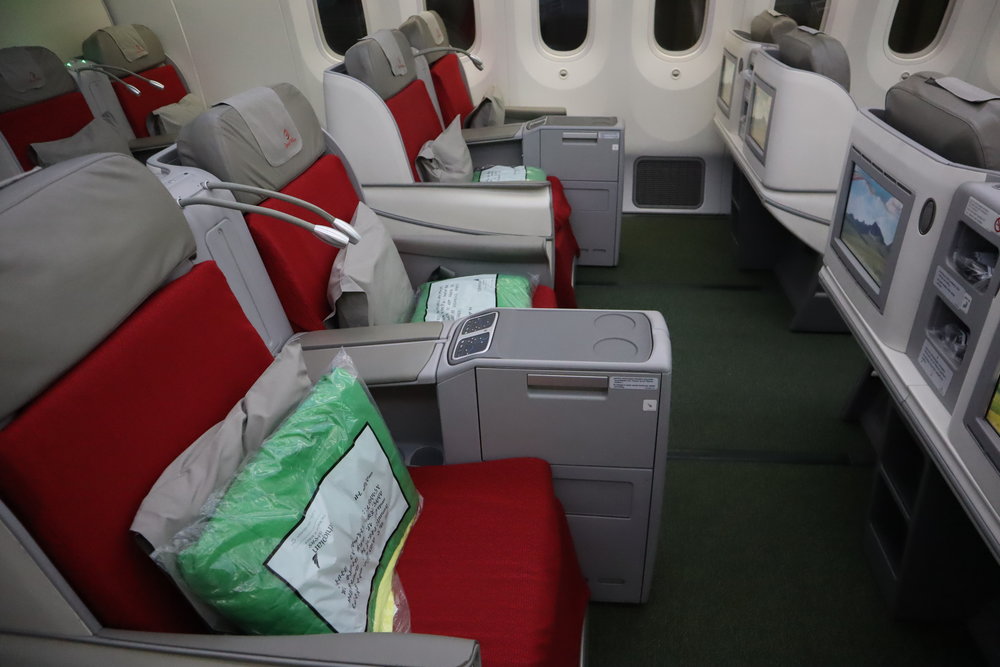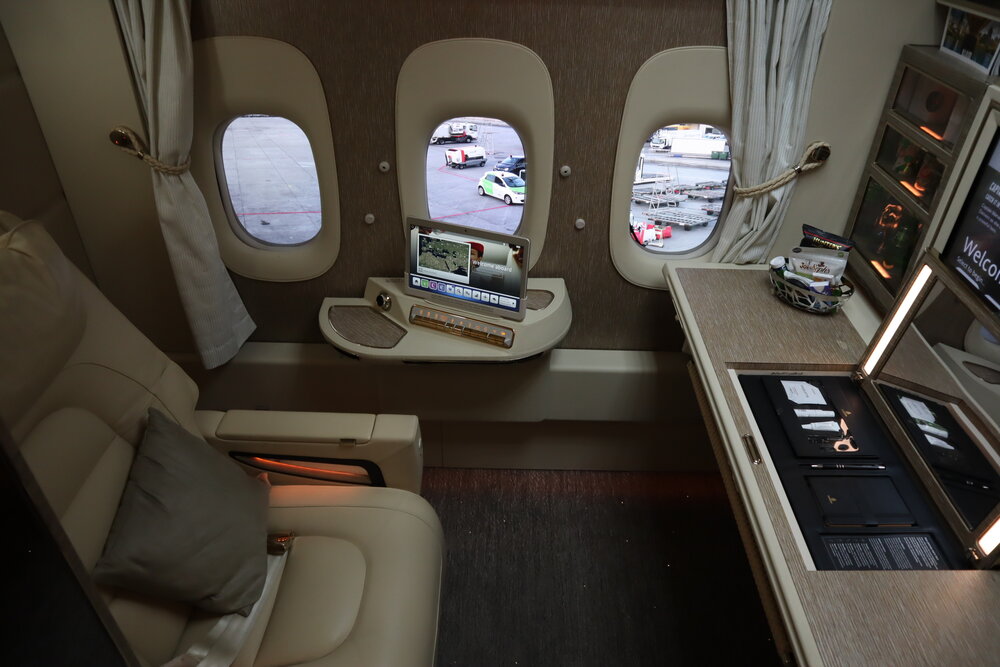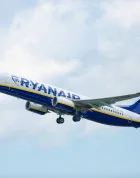Luxurious, complex trips are one of the most desirable redemptions in the Miles & Points world.
At first glance, they seem pretty easy to book: earn some points, pick a bunch of flights on award-winning airlines, and you’re on your way to sipping champagne and consuming obscene portions of caviar at 40,000 feet.
Unfortunately, airline loyalty programs are not always willing to cooperate with this master plan. On the example of our very own Aeroplan, all too often we see pesky mixed-cabin awards, outrageous dynamic pricing, and overpriced itineraries with two overnight layovers.
A good way to overcome such minor inconveniences when booking multi-stop itineraries is to use several loyalty programs on a single trip.
With the right earning strategy, diversifying into different points currencies may give travellers access to award space unavailable on Aeroplan or simply offer a better deal for partner airline redemptions.
Why Not Just Use Aeroplan, Again?
Aeroplan is the most popular airline loyalty program in Canada, and rightfully so. With Aeroplan, members can redeem points on dozens of airlines that serve hundreds of destinations around the world.
On top of that, Aeroplan points are easy to earn thanks to generous welcome bonuses on a series of co-branded credit cards.
As flexible as Air Canada’s loyalty program is, however, sometimes it just doesn’t have optimal flights available. And when a single missing piece threatens to ruin an otherwise perfect itinerary, it’s only natural to look elsewhere.
Sample Itinerary #1: Accessing More Partner Award Availability
To illustrate the potential of diversification, let’s examine two itineraries that I’ve either booked or found availability for at the time of writing this post.
Recently, I ticketed a three-stop round-the-world trip that I couldn’t be very flexible with neither in terms of destinations, nor timing. At the bare minimum, I had to get to Austria to attend my friend’s wedding in August, as well as visit my family in Moldova while I’m in Europe.
As a natural first step, I checked if there were any reasonably priced flights from Vancouver to Moldova with a stopover in Vienna. Unfortunately, dynamic pricing was quite outrageous on my travel dates.
Paying some 180,000+ Aeroplan points for a week-long trip from Canada to Europe didn’t sound particularly appealing to me, so I went back to the drawing board to see if I can get a better price – or at least, a better routing.
Even when I searched segment-by-segment, all itineraries going over the Atlantic contained a mixed cabin, and some had overnight layovers, but most often contained both. Unsatisfied, I decided to experiment with the unorthodox idea of going to Europe via the Pacific.
I’ve always had a soft spot for Asia, and while stopping over there certainly wouldn’t make things cheaper, I would at least get to add another destination to my journey and thus make my points go further.
I knew Aeroplan wouldn’t ticket an itinerary going to Europe through Asia on a single one-way bound, so I simply booked an Air Canada flight from Vancouver to Seoul that I could eUpgrade, which came out to 62,000 Aeroplan points and 13 eUpgrade credits in total.
Now, this insignificant detour would only fit within my timelines if all subsequent segments aligned perfectly. The resulting million-dollar question is: how do I conveniently get from Seoul to Vienna, on a specific date, without breaking the bank?
Looking at Aeroplan again, I could fly Ethiopian Airlines via Addis Ababa, but I figured there were better ways to use 100,000 Aeroplan points than by spending 37 hours on the road in a 2-2-2 business class cabin.

With other Star Alliance options nonexistent, I turned to Oneworld.
Qatar Airways had no availability, but Finnair, surprisingly, did. I even had the luxury of choosing a daytime layover in Finland to explore Helsinki before heading off to Vienna on an evening flight.

As a side note, one can book Finnair either through Avios or Asia Miles.
For roundabout routings with layovers, Asia Miles is almost always a better deal, because it prices the itinerary as a whole as opposed to charging for each segment separately. This itinerary was no exception, pricing out at about 93,000 Avios or 70,000 Asia Miles.
Now, for the last piece of the puzzle. Chișinău is a pretty challenging airport to fly in and out of. Depending on seasonality, there are anywhere from one to five daily Star Alliance flights on LOT, Austrian, and Turkish Airlines.
All other airlines that service Chișinău are low-cost, which wouldn’t work because I would be carrying a lot of checked baggage.
For the Vienna to Moldova segment, I found a direct Austrian Airlines flight in business class. I knew that I would add Chișinău as a stopover on my journey home, so I just noted the flight number down before searching for the next segments.
Historically, the best option to fly out of Chișinău has been Turkish Airlines. Because of their extensive route network, it’s pretty easy to connect to anywhere else via Istanbul. Unfortunately, this was not the case for my trip.
After setting aside a week to spend with my family, I indeed found a Turkish Airlines flight to Istanbul. However, the only available flight from Istanbul to the Americas on that day was going to Mexico City, where I’d have to spend just short of 24 hours before connecting onward to Vancouver.
I wasn’t thrilled about possibly sitting next to a stranger in the business class cabin for some 12 hours and a rather inconvenient layover. I noted this routing down as a last resort option, but I kept searching.

Rather ironically, I ended up choosing an even more roundabout routing. I would still take the flight from Moldova to Istanbul, where I’d have a layover spanning most of the day. I would then connect onto Abu Dhabi, spend the night at the airport, and take the morning Etihad Airways flight to Chicago.
I chose this option because of the better hard product on Etihad, as well as the opportunity to explore Istanbul. I may change it in the future if Turkish Airlines opens space on their route to Vancouver.
So far, the routing looked like this:
The problem with this itinerary is obvious: it terminates in Chicago, and I happen to be living in Vancouver. When I tried adding a direct Air Canada segment for the missing part of the journey, the cost jumped from 105,000 Aeroplan points to 151,000. Oops.
It turns out that Aeroplan dynamic pricing works differently with married partner segments. That same Chicago–Vancouver flight cost just short of 25,000 points if booked on its own, which is what I ended up doing to complete the circle.
I chose to spend a night in Chicago because I didn’t feel like pushing my luck on a 90-minute connection window. However, it could have been doable given that Abu Dhabi has a US pre-clearance facility, just like most Canadian airports.
In summary, using the power of diversification and some unorthodox routing strategies, a rushed friends-and-family visit became a luxurious three-stop round-the-world trip with three long layovers. The total cost is about 192,000 Aeroplan points, 70,000 Asia Miles, and some $300 in taxes and fees.
In comparison, the most direct round-trip routing with no extra destinations and inconvenient layovers would’ve cost well north of 250,000 Aeroplan points.
Sample Itinerary #2: An Aspirational Round-the-World Trip
The three-stop round-the-world I described above takes advantage of the sheer abundance of partner airlines that one can book with just two loyalty programs. By not keeping all eggs in one basket, travellers can weave together complex itineraries mere months or even weeks in advance.
But just how far could one stretch their points if they were to leverage Aeroplan together with niche programs such as Singapore Airlines KrisFlyer or Emirates Skywards?
Enter a seven-stop, ultra-luxurious, one-month-long trip on the world’s best business and First Class products – one which I myself am sketching out for the future.
Leg 1: Toronto–New York on Air Canada
The journey starts with an Air Canada flight from Toronto to New York. On this itinerary, this segment is purely for positioning.
Flights to New York regularly retail for about 5,000 Aeroplan points in economy or 15,000 in business class as per the Aeroplan Flight Reward Chart, which is a bargain for a weekend getaway.
Leg 2: New York–Frankfurt on Singapore Airlines
After a few days in New York, I’ll embark on Singapore Airlines Suites Class to Frankfurt. The only way to book Suites is with Singapore Airlines’s own KrisFlyer program.

As one of the world’s most exclusive First Class experiences, the A380 Suites are priced accordingly at 86,000 KrisFlyer miles one-way at the “Saver” level, or 140,000 KrisFlyer miles one-way at the “Advantage” level, as per the KrisFlyer award chart.
Availability on this Singapore Airlines fifth-freedom route is sporadic, but it’s entirely possible to confirm an “Advantage” seat a few months in advance, whereas a “Saver” seat will require more luck in terms of snagging saver availability as soon as Singapore Airlines decides to release some.
On a side note, should one not want to splurge on double beds, caviar, and champagne, Singapore Airlines’s award-winning business class on this route has way more availability for just 72,000 KrisFlyer miles.
Leg 3: Frankfurt–Bangalore on Emirates
After setting aside some time for Frankfurt, let’s add an Emirates First Class flight to Bangalore, with a connection in Dubai.
India is often an overlooked destination in Miles & Points circles, and given the rather… limited business class offering on its national carrier, flying a Middle Eastern airline is probably the best option to get there.

With Alaska Mileage Plan ending their partnership with Emirates, the best way to book Emirates First Class is using their own loyalty program: Emirates Skywards. Awards on the Frankfurt–Bangalore route retail for 122,500 Skywards miles, plus a few hundred dollars in cash grabs taxes and fees.
At the time of writing this article, availability was quite decent for a booking made six months in advance.
If you don’t care for First Class, do note that business class on Emirates is not stellar, especially on their Boeing 777 featuring a 2-3-2 configuration. Should you want to save some miles, it’s best to go with a tried-and-true business class on Air France, KLM, or Swiss instead.
Leg 4: South Africa via Mauritius on Air India, Vistara, and Air Mauritius
Having fully embraced Bangalore, it’s time to add another Aeroplan redemption to this journey. This time, we’re taking advantage of non-alliance partners Air Mauritius and Vistara to take us from Bangalore to Johannesburg with a stopover in Mauritius.
The cost of this ticket can be optimized at 65,000 Aeroplan points in business class, which includes the 5,000 points for the Mauritius stopover. The shorter routing of Bangalore–Mumbai–Mauritius–Johannesburg is better, as it keeps the itinerary under the 6,000-mile distance band within the Atlantic zone.
It’s also possible to add a stop in Delhi before continuing onward to Mumbai, but this would push the total distance over 6,000 miles, increasing the overall cost to 85,000 Aeroplan points instead.
Leg 5: Johannesburg–Singapore–Seoul on Singapore Airlines
There can never be too much Singapore Airlines, can there? Hence, our next two segments, Johannesburg to Singapore and then onward to Seoul, are in their business class.

KrisFlyer lets travellers pay an extra US$100 to add a stopover on one-way saver awards. In this case, the stopover is Singapore, which is a city I personally love.
There is no extra mileage cost, hence the whole itinerary is priced at 78,000 miles, according to the KrisFlyer award chart from Africa to Asia.
Leg 6: Seoul–Toronto on Korean Air
There are two airlines that fly directly from Seoul to Toronto. Air Canada is one of them, but as one might expect, Aeroplan business class awards for this long-haul flight may be priced rather atrociously under dynamic pricing.
The alternative is booking Korean Air via Delta. Award space isn’t exactly plentiful, but there are some seats here and there. Premium cabin awards on Korea’s national carrier start at 180,000 Delta SkyMiles.
A couple of welcome bonuses on mid-tier American Express US Delta cards can cover the cost of the flight, and the taxes and fees are low. However, those with sizeable Membership Rewards balances should note that transferring 180,000 points to Delta SkyMiles is only marginally better than setting money on fire.
Conclusion
Exploring loyalty programs outside of Aeroplan has been one of my main strategies when booking complex international trips. It allows for more choice and more flexibility when award space is sparse.
As an added bonus, diversifying into different points currencies has allowed me try some of the world’s most exclusive onboard experiences, such as First Class on Singapore Airlines, Emirates, or Japan Airlines.
While Aeroplan makes for a natural starting point for Canadians, consider taking the step up to a wider range of loyalty programs to expand your range of travel possibilities.





















